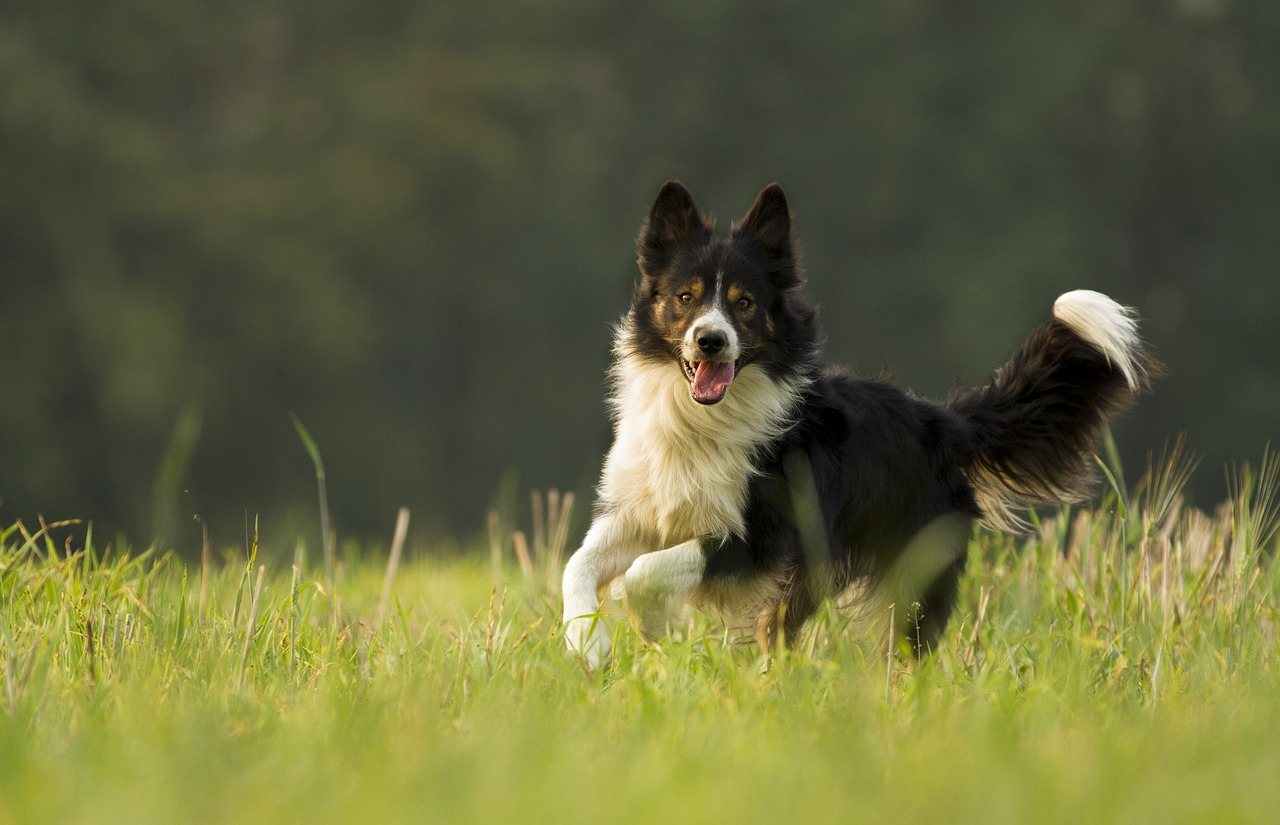Saint Shepherd (German Shepherd & St. Bernard Mix): Pictures, Info, Facts

Updated on

Height:
25-28 inches
Weight:
85-140 pounds
Lifespan:
10-14 years
Colors:
Black, brown, pied, sable
Suitable for:
Families that want an active and loving but not overbearing pet, those looking for a guard dog
Temperament:
Big and goofy, good with kids, obedient and easy to train
If you want a dog who’s intimidating enough to keep burglars at bay but sweet enough to trust around your children, then you’re going to love the Saint Shepherd. It’s a mix between the German Shepherd and the St. Bernard, so you’re dealing with a dog big enough to eat you but more likely will drown you in slobber.
That being said, the St. Bernard German Shepherd Mix isn’t for everyone, especially if you have touchy neighbors. Their barks can wake the dead, so that curmudgeon who lives beneath you will have plenty to talk to the landlord about.
If you have the space for them, though, you’ll be hard-pressed to find a sweeter, more loving dog — but they’re still not something a criminal wants to see when breaking into your house.
Saint Shepherd Puppies
We need to warn you up front: Saint Shepherd puppies may be literally irresistible, so don’t even think about checking them out if you’re not planning on coming home with at least one.
The idea behind the breed was to take the mass that St. Bernards bring to the table and add a little bite to their bark by mixing in German Shepherd DNA. The result is a physically imposing dog who may hide behind you in times of trouble.
St. Bernard German Shepherd Mixes are big, though, and that extends to their personalities. While they’re not super active, they may be too rambunctious for apartment dwellers (and their booming barks won’t exactly endear you to the rest of the complex, either).
If you have the room for them, Saint Shepherds will quickly steal your heart. Below, we’ve listed a few things to be aware of before you bring one home.
Three Little-Known Facts About the Saint Shepherd
1. The Breed Was Intended to Be a Cuddly Guard Dog
That may sound like an oxymoron, but “cuddly guard dog” describes these mutts to a T. They’re huge, and we can’t imagine what it would be like if they chased us in anger, but that’s partially because we can’t imagine them actually getting angry.
The St. Bernard German Shepherd Mix relies mostly on their size to intimidate evildoers, as they generally prefer cuddling family members to disemboweling strangers. Still, it would take a brave thief indeed to continue breaking into your house after they saw one of these lumber out of the bedroom.
2. They Can Be Extremely Smart — and Stubborn
The German Shepherd is one of the smartest dog breeds on the planet, and the St. Bernard is… not. However, those big pups make up for lack of intelligence by doubling down on stubbornness.
Luckily, Saint Shepherds are smarter than they are bull-headed, but you still need to be firm and consistent while training. These dogs love to learn, but they’ll occasionally try to cut corners to see what they can get away with.
It’s essential to nip problematic behavior in the bud while they’re still puppies because once they’re fully-grown, they won’t have to listen to anybody if they don’t want to.
3. They Don’t Bark Often, But When They Do…
These dogs aren’t that talkative, and they usually only bark when they’re excited. That makes them great guard dogs, as they’re not likely to sound false alarms.
Also, there’s zero chance that you’ll sleep through them barking at an intruder — and neither will your neighbors. This can become a problem if they do bark for no reason, though, which is another reason why being diligent about their training is a must.

Temperament and Intelligence of the Saint Shepherd 🧠
German Shepherds are prized for their intelligence, whereas St. Bernards are beloved for being big, cuddly balls of fluff, so when you combine the two, you’re going to get the best of both worlds.
These dogs are affectionate, so if you shy away from constant demands for attention and incessant attempts to lick your face, they’re not for you. They’re extremely gentle around kids, although they sometimes forget just how big they are when they get excited, so you’ll have to make sure little ones don’t get trampled.
Their brains allow them to pick up new commands quickly, and they love to please, so frequent training sessions are highly recommended. You’ll also need those training periods to ensure that your St. Bernard German Shepherd Mix listens to your instructions, because this is not a breed that you can simply overpower.
Are These Dogs Good for Families? 🏡
You’d be hard-pressed to even imagine a better dog for families than the Saint Shepherd. They’re gentle giants, making them safe around children of all ages. Again, just be careful when they get the zoomies because, while they’re not likely to bite, they can stomp the living daylights out of an unsuspecting kid.
While they’re sweet and affectionate, they’ll also keep a watchful eye on little ones, and no one’s likely to mess with the kid that has a 100-pound dog standing guard.
This combination of loving and intimidating makes them ideal companions for families, but they’re great for single people as well. St. Bernard German Shepherd Mixes are extremely affectionate and fairly low-maintenance, so you won’t need to enlist the help of all your relatives to keep them entertained.
Does This Breed Get Along With Other Pets? 🐶 😽
Given how new this breed is, it’s too soon to say with absolute confidence whether they’re safe around other pets. That’s especially true given their German Shepherd heritage, as many Shepherds don’t get along with other dogs. St. Bernards are known to be loving toward most animals, though.
Luckily, early reports indicate that Saint Shepherds tend to take after St. Bernards rather than German Shepherds. They seem to be accepting of other animals and see them as potential playmates rather than rivals.
You still need to socialize them early and often, though, so they’re used to being around other pets. Also, every dog is an individual, so even if the breed tends to produce tolerant animals, that doesn’t mean the one you bring home will be.
Things to Know When Owning a Saint Shepherd
It’s always nice to own a unique dog, but the problem is that you often don’t have the experiences of other people to lean on when it comes to knowing what to expect from your pooch. Here are a few things you should know to give you a better idea of what’s in store for you if you adopt one of these dogs.
Food and Diet Requirements 🦴
These dogs are big —very big. Expect to spend a small fortune feeding these animals, as they have equally big appetites.
However, that doesn’t mean you can just load them up on kibble. These pooches are prone to obesity, so you need to be careful to offer them a healthy diet and not to overfeed them.
We recommend a high-protein diet with minimal treats or scraps. You should vary how much you feed them depending on how active they are, as there tends to be a wide disparity between individual energy levels in this breed.
Exercise 🐕
One of the great things about Saint Shepherds is that their energy levels often mirror that of their owners. These dogs are happy lounging around on the couch watching TV, but they also love to get out and run around at the park.
We urge you not to be complacent with your dog, though, because these animals need a great deal of exercise to stave off obesity. Plus, their super-sharp minds long for mental stimulation, so a long walk, vigorous training regimen, agility training, or all of the above would be welcomed.
If you don’t give your St. Bernard German Shepherd Mix enough stimulation, they can become destructive, and you can only imagine the kind of damage they can do.
Training 🦮
The German Shepherd in these dogs makes them eager learners who love to please, so training is usually a breeze. They can pick up on commands quickly and love to learn.
That being said, they have St. Bernard in them too, which means they can be stubborn. They don’t respond well to negative reinforcement, so don’t try to overpower or bully them, but it’s important that you establish yourself as someone to be obeyed.
If you let them call the shots when they’re puppies, you’ll have a hard time establishing your authority when they’re adults, and trust us when we say that it’s hard to stop a full-grown Saint Shepherd who thinks they can do anything they want.
Grooming ✂️
Many designer breeds were created to be low maintenance, and they’re often considered hypoallergenic. That’s definitely not the case with Saint Shepherds.
These dogs shed frequently. Then, once they’re done shedding, they shed more. They have an extremely thick double coat that requires frequent brushing, or else it can get tangled and matted. You’ll want to brush them, anyway, just to keep a thin layer of dog hair from forming over everything you own.
Expect to brush them at least four or five times a week. That may seem excessive, but you’ll change your tune when you realize that you can fill up a garbage bag nearly every time.
Beyond brushing, you should bathe them every few months. Any more than that is liable to dry out their skin. The other grooming needs are fairly basic: Brush their teeth, trim their nails, etc. The only other thing worth pointing out is that you should clean their ears out regularly to avoid infection.
Health and Conditions ❤️
Both German Shepherds and St. Bernards are prone to a few serious health conditions, but like with many animals, cross-breeding helps mitigate them somewhat. That doesn’t mean that these dogs don’t have their issues, however.
Here are a few conditions that you should look out for if you own one of these pooches:
- Entropion
- Ectropion
- Dry eye
- Keratoconjunctivitis
- Hip and elbow dysplasia
- Bloat
- Dilated cardiomyopathy
- Renal cystadenocarcinoma
- Hemophilia
Male vs. Female
You probably won’t be able to tell a male Saint Shepherd apart from a female Saint Shepherd at first glance because they’re both massive. Female Saint Shepherds are a tad bit smaller, but we’re talking a matter of a few pounds and an inch or two.
They’re similar in terms of temperament as well, although male Saint Shepherds tend to be more playful while the ladies are more content to sit near you to get attention.
If you have small children in the house, a male Saint Shepherd is more likely to see them as playmates, whereas the female Saint Shepherd might try to “herd” them. Regardless, both sexes will likely be prepared to defend your brood with their lives if necessary.
Conclusion
If you want a tiny little dog that you can carry around in your purse while you go shopping, Saint Shepherds probably aren’t for you (unless you have really strong arms). However, if you want a gigantic, boisterous ball of fluff who loves to cuddle and play, one of these pups will make your life complete.
The St. Bernard German Shepherd Mix isn’t for everyone, as feeding them can cost a fortune, and they take up a massive amount of space, but they’re great family dogs. That’s true even if your family likes to spend more time on the couch than on the hiking trail, although you do need to make sure they get enough exercise.
Basically, there’s a simple test you can perform to decide if a Saint Shepherd’s right for you. Imagine that you’re sitting on the ground when the biggest dog you’ve ever seen comes running up to you, snuggles as close to you as they can, and then licks your face for a solid two minutes.
If the above scenario grossed you out, keep looking. If, however, that sounded like a little slice of heaven, then congratulations, you’ve found your new dog.
See Also:
- St. Bernard Corgi Mix: Pictures, Temperament & Traits
- Saint Berhusky (St Bernard Husky Mix): Info, Pictures, Characteristics & Facts
Featured Image Credit: Ajale, Pixabay












